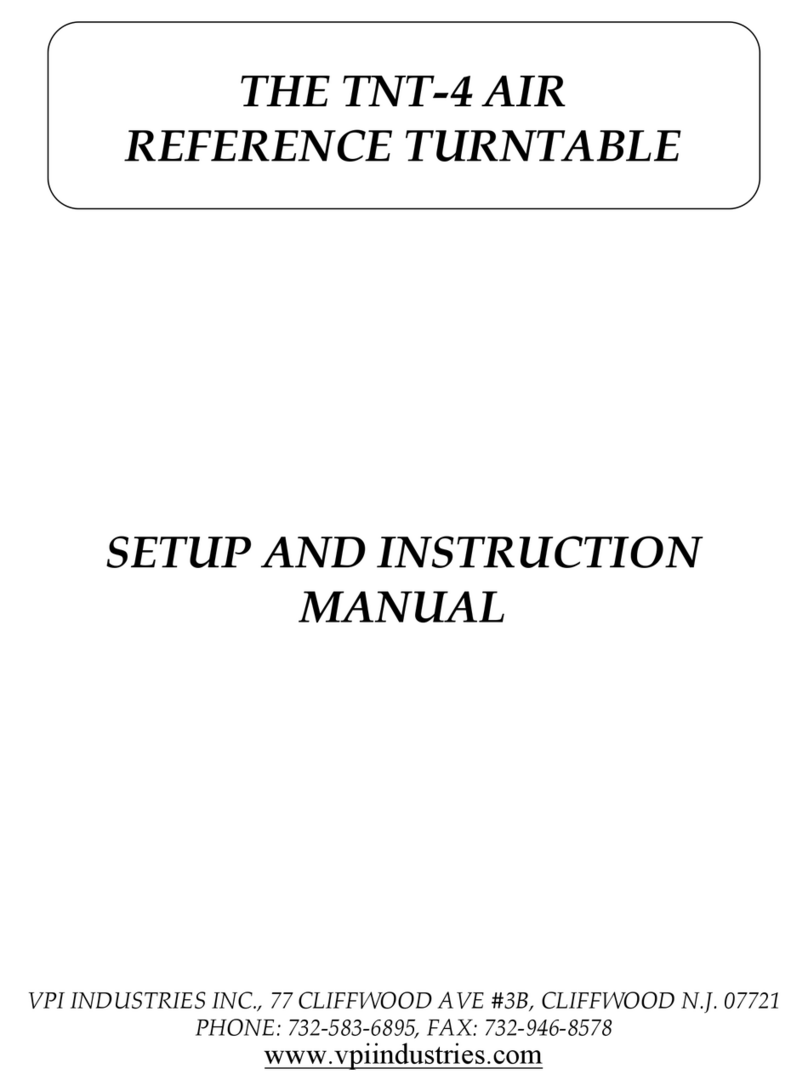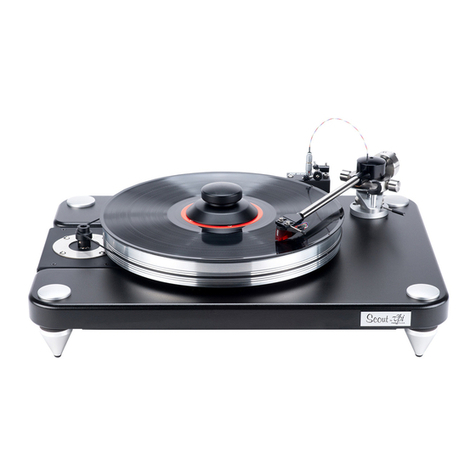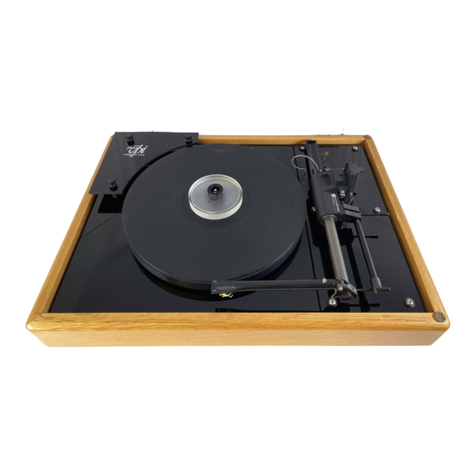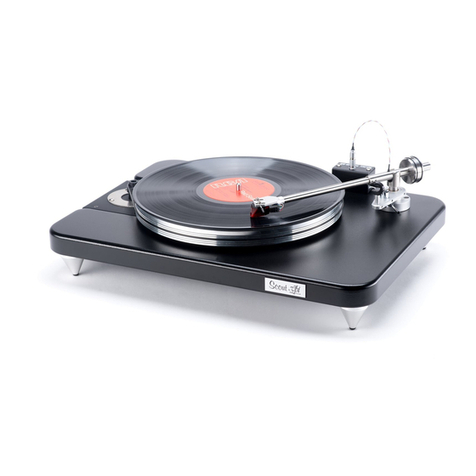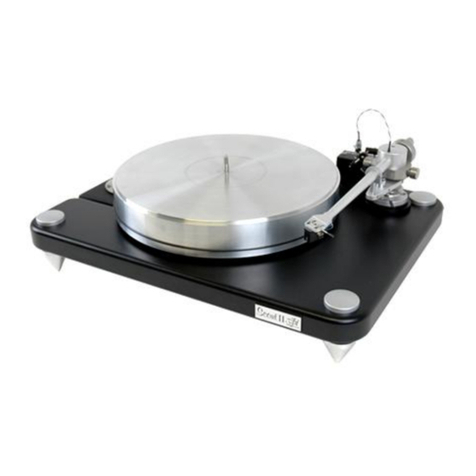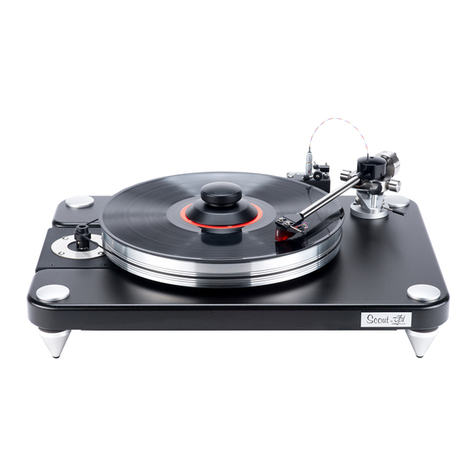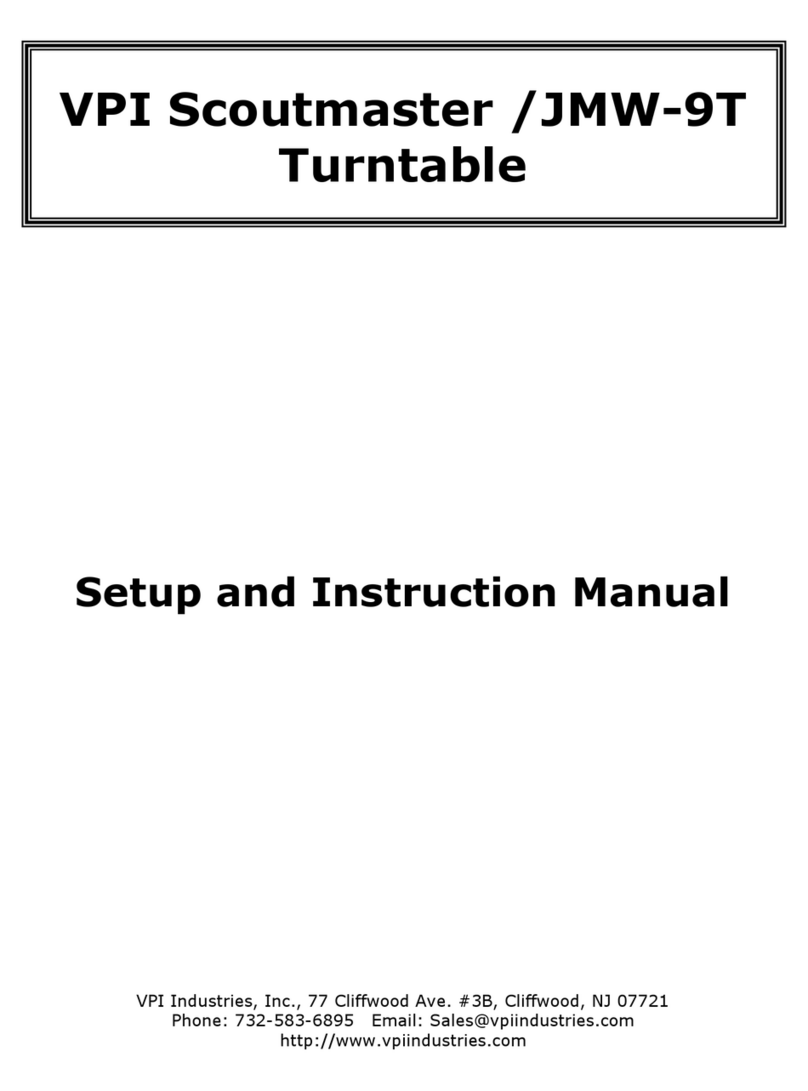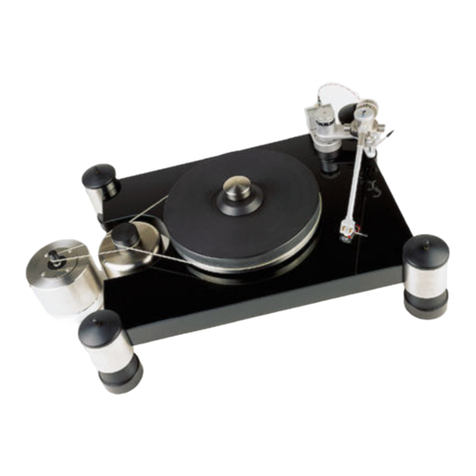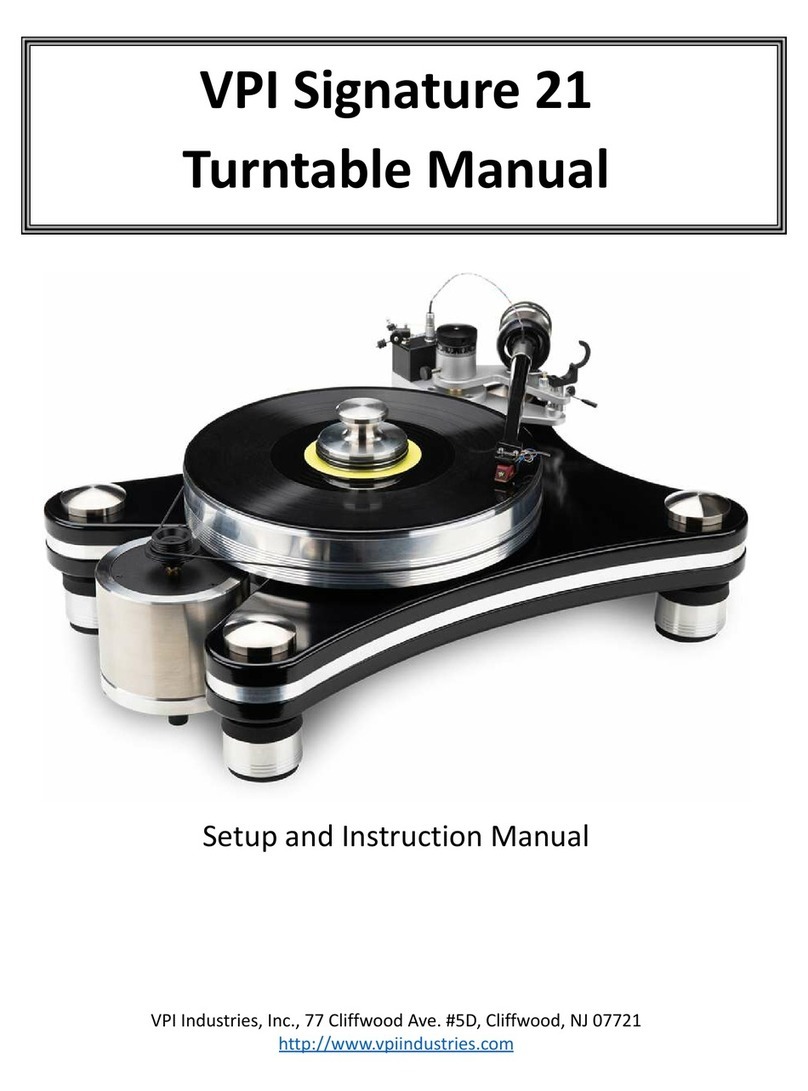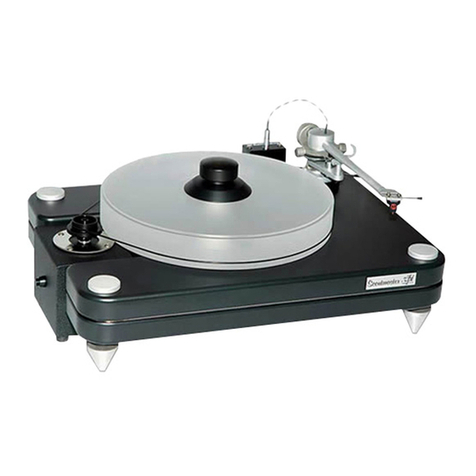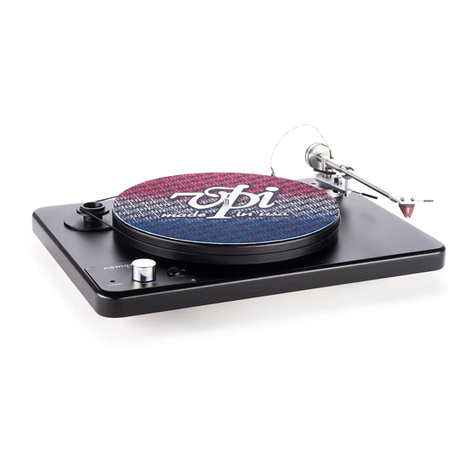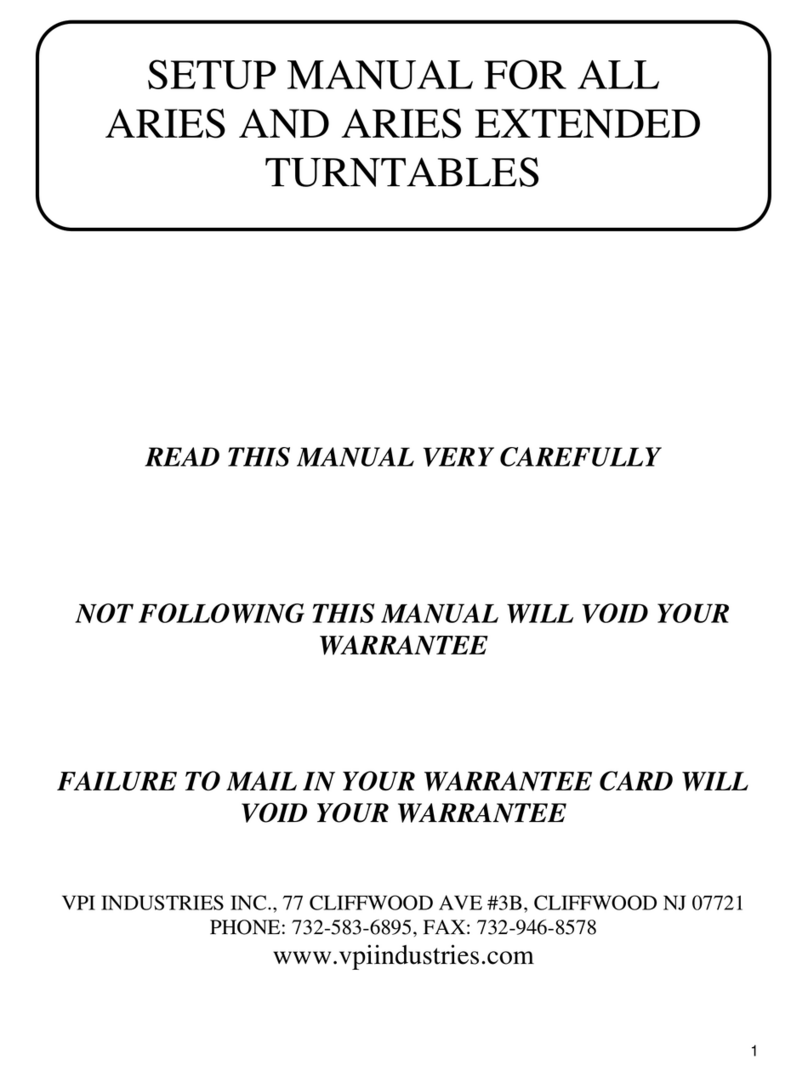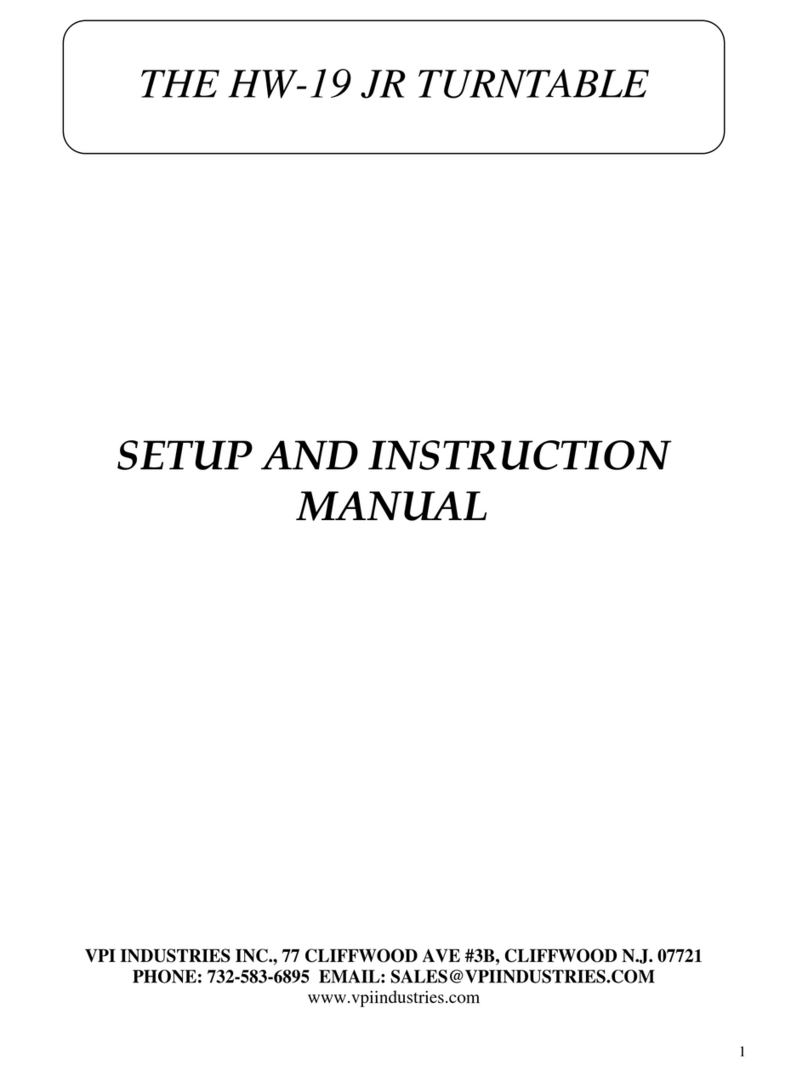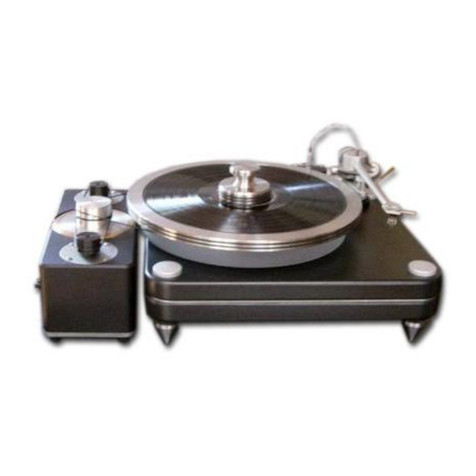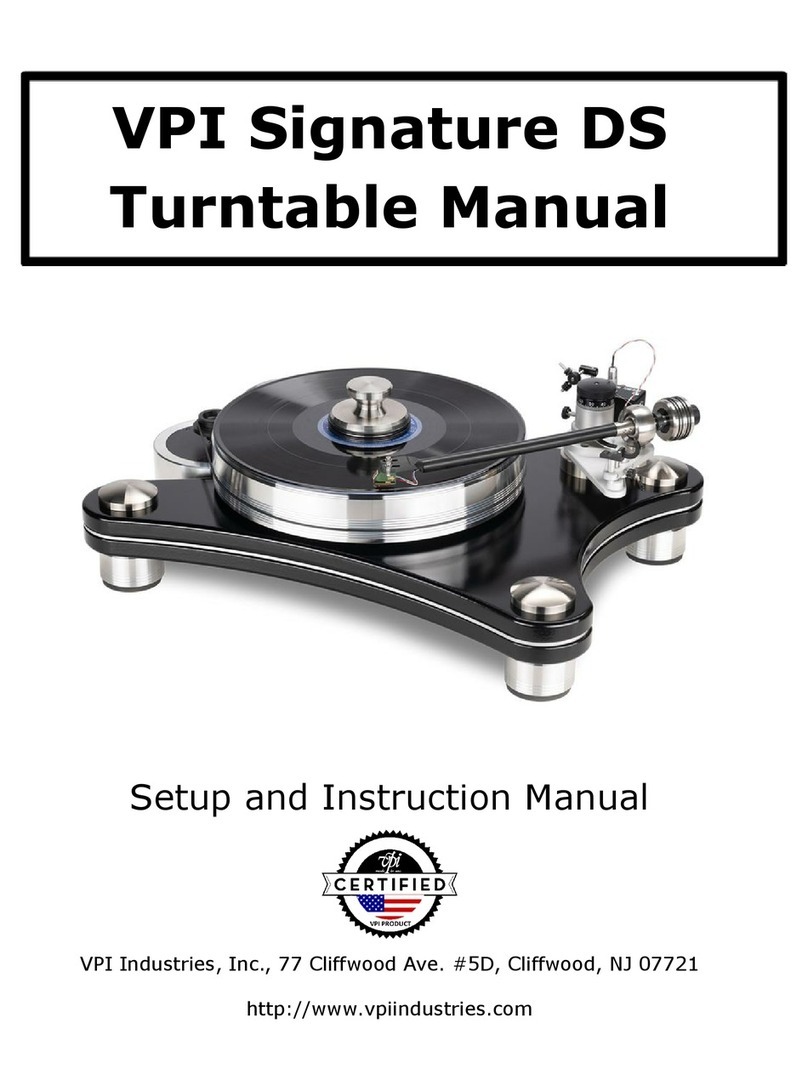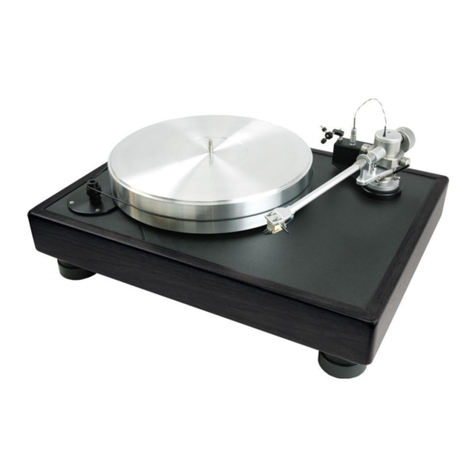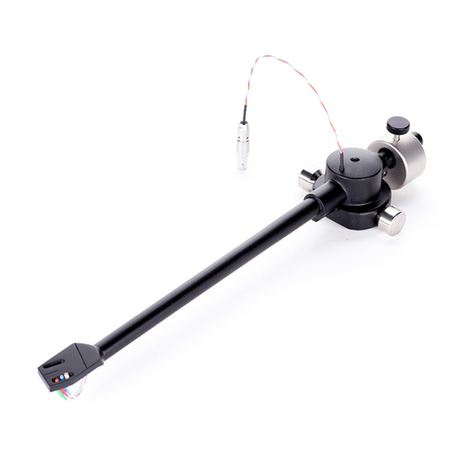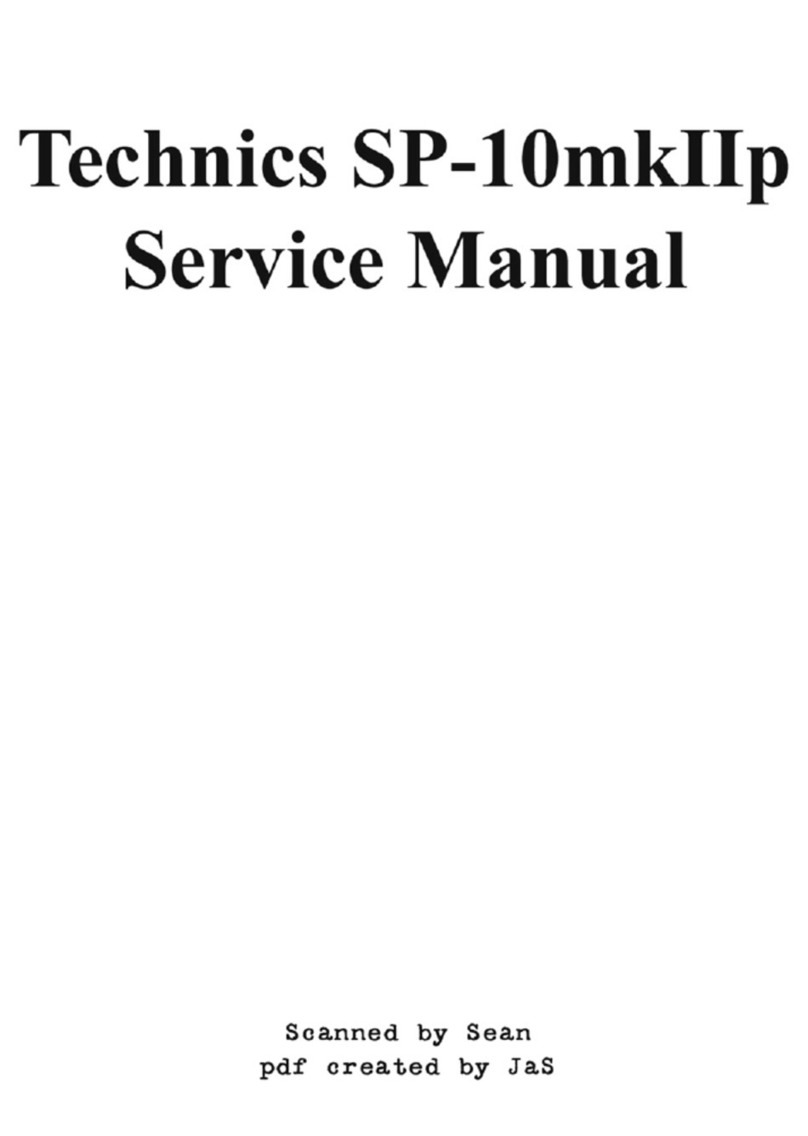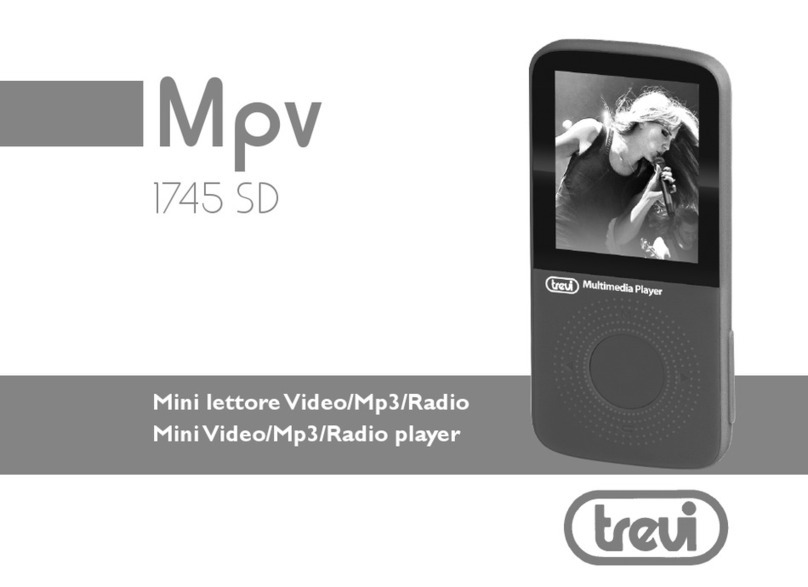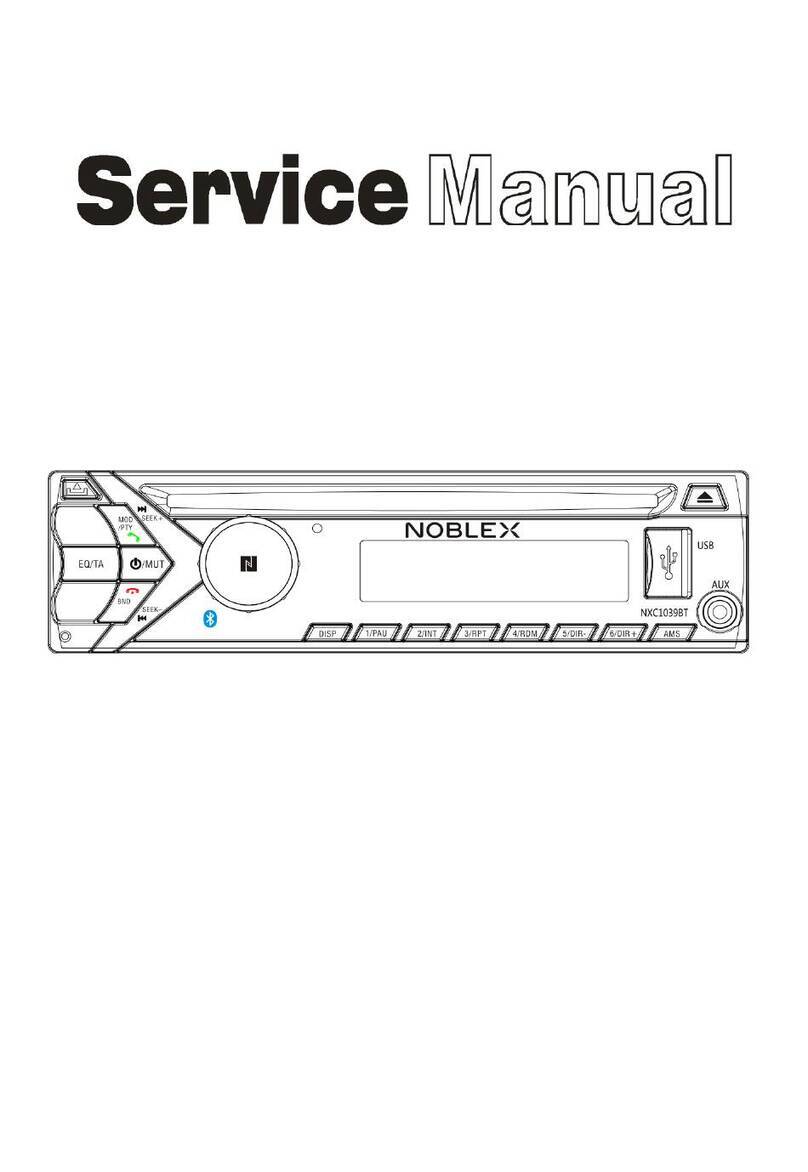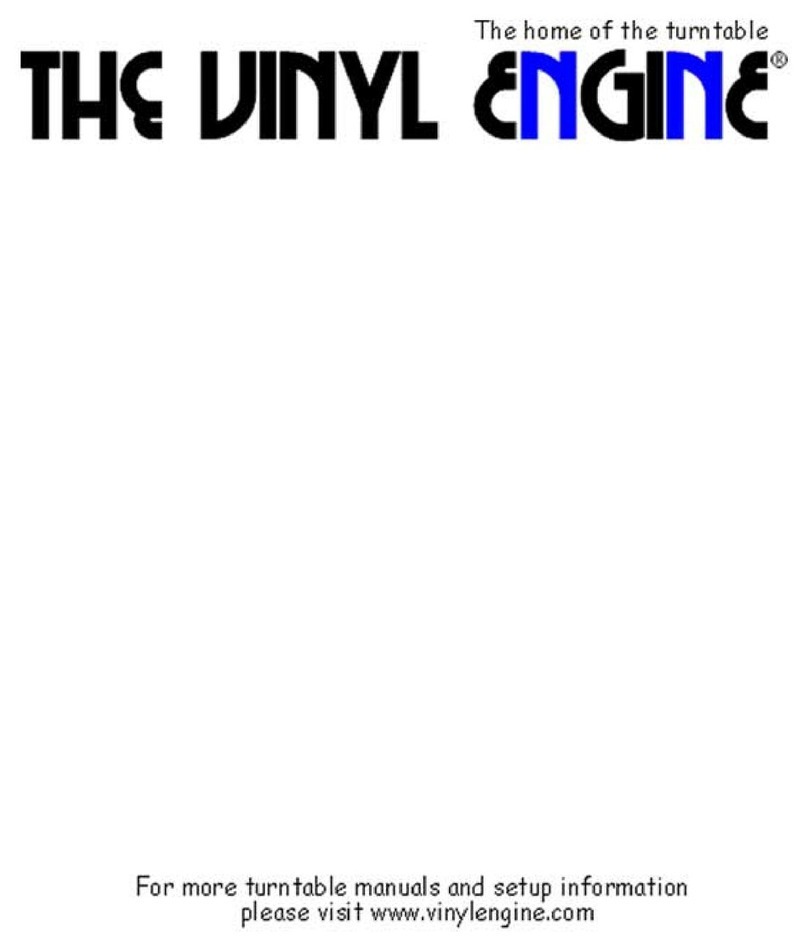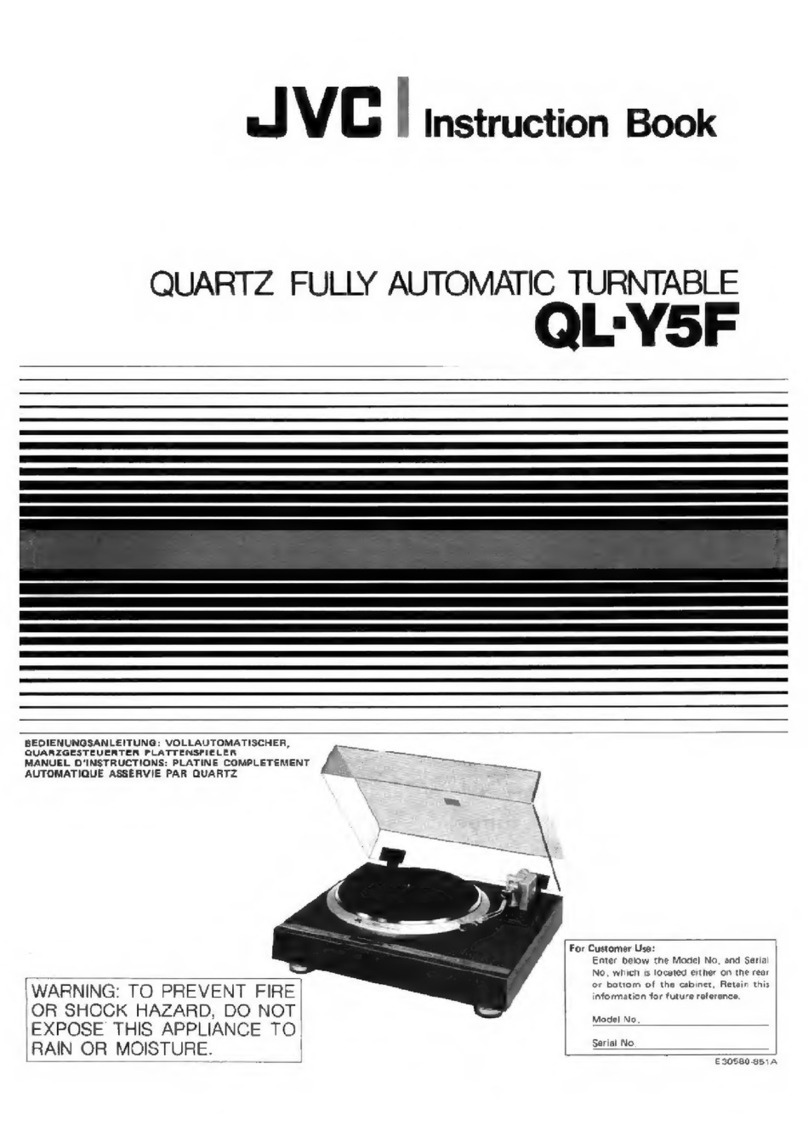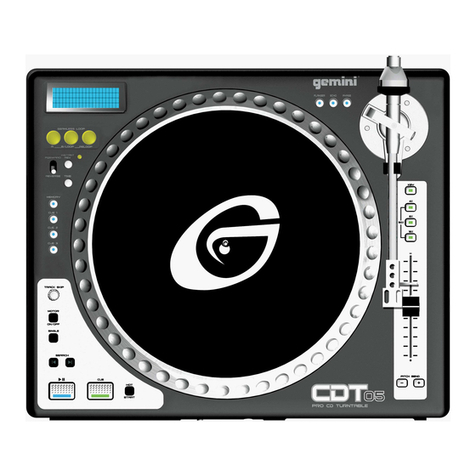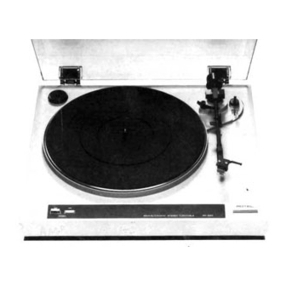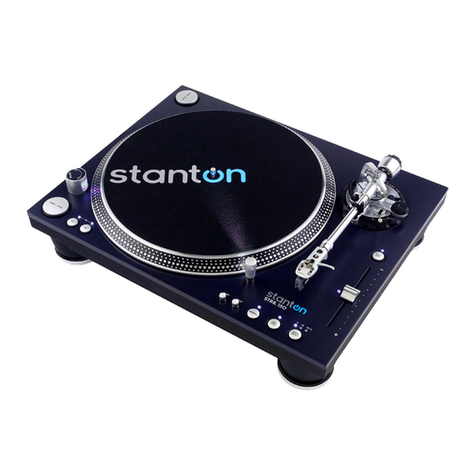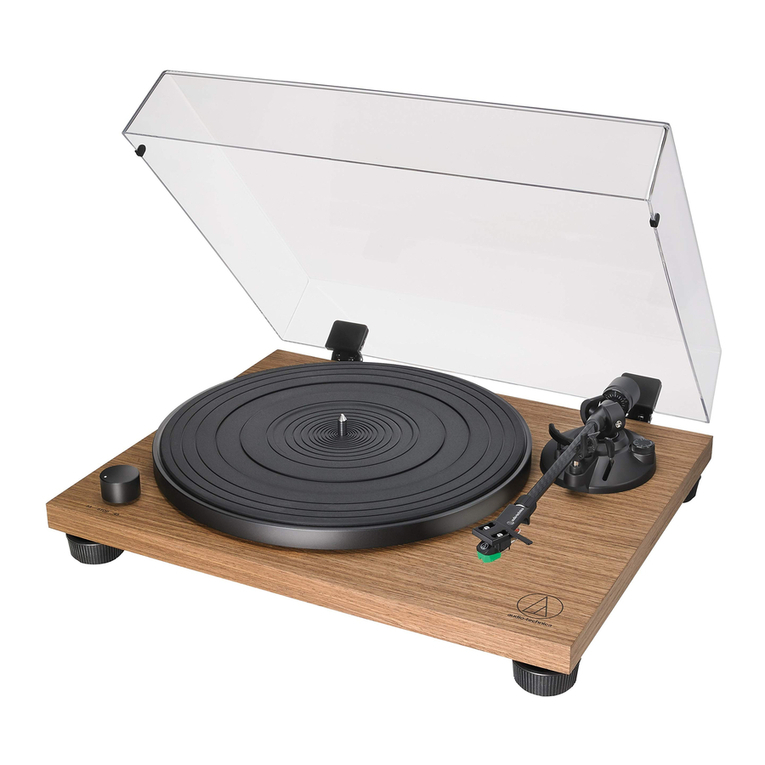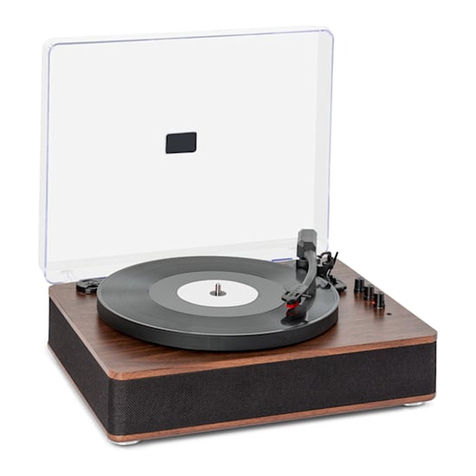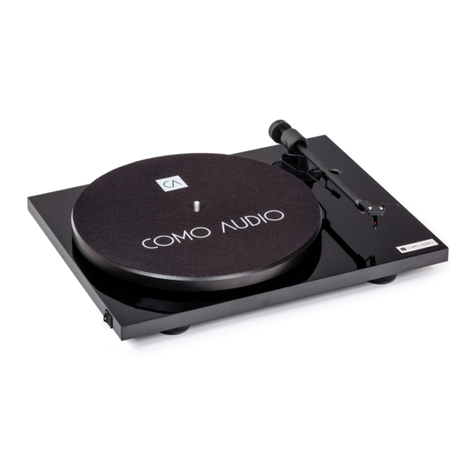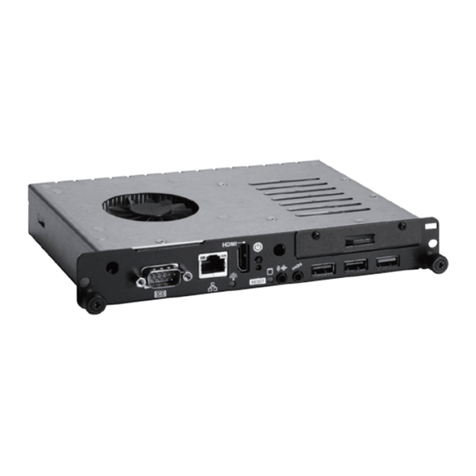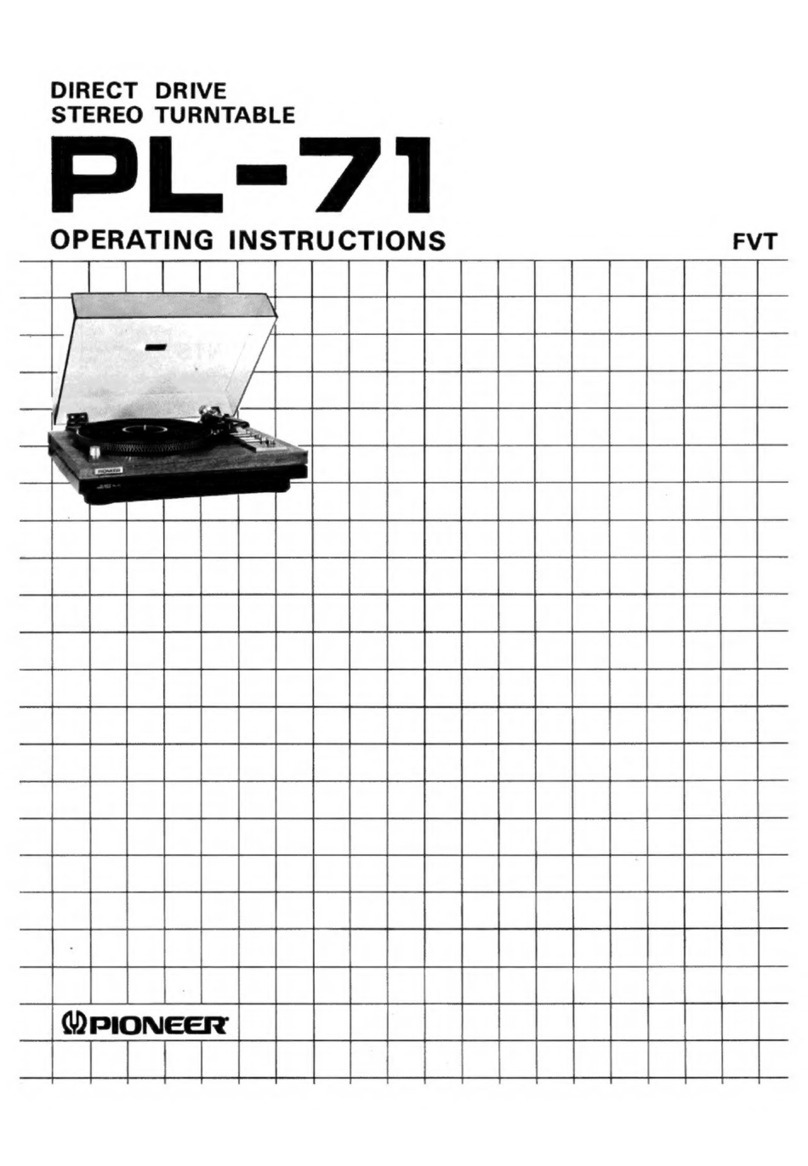
2. CARTRIDGE MOUNTING:
FOR CARTRIDGES WITH THREADED MOUNTING HOLES:
Use the screws supplied by the cartridge manufacturer to mount the cartridge. Any other screws
may not fit the thread properly and may even damage the threads and cartridge. USE ONE OF THE
SUPPLIED WASHERS UNDER THE SCREW HEAD.
For all cartridges with pass through mounting holes use the hardware supplied with the arm.
Remember to use the washers under the screw heads to prevent damage to the finish on the JMW
arm. In this step, the connectors will be attached to the cartridge's terminals. Disregard the color of
the insulators on the cartridge clips.
THE COLOR CODE OF THE WIRE IS:
RED = right hot BLACK OR WHITE = left hot
GREEN = right ground BLUE = left ground
IF YOUR PHONO SECTION INVERTS PHASE, THE HOT COLOR BECOMES THE GROUND COLOR
Using tweezers or fine tipped pliers grip the center of the red wire's connector (do not grip the wire)
and push it onto the cartridge's right hot terminal pin. In the same way, connect each of the
remaining connectors to its respective cartridge terminal. Do not push the connectors all the way
on, as this could damage the cartridge. Always back up the cartridge with your finger when pushing
on the clips.
The 10.5 SE tonearm comes with one large dropped counterweight installed on the rear shaft of the
tonearm. For most cartridges you will only need this large weight. The counterweight is held in
position by a setscrew.
Pick up the arm tube, taking care not to strain or damage the fine 4-color wire and Lemo connector.
For now, position the large counterweight as close to the bearing housing as you can (toward the
front of the arm) but not touching the balance ring. The object here is to balance the arm while
keeping the counterweight as close to the bearing housing as possible. This results in the least
inertia for a given cartridge weight.
In some rare cases it may be necessary to use two counterweights together or a larger
counterweight. Contact your dealer if a second or larger counterweight is needed.
3. OVERHANG ADJUSTMENT:
This adjustment will yield the lowest distortion in the last third of the record, the hardest to track,
when playing a typical 12" record. Do not go crazy over this adjustment. You do not know if the
stylus is aligned properly on the cantilever. You are also facing a constantly moving target when
playing a record. The arm is moving in 3-dimensions and will only approximate the accuracy you
have built into your alignment.
